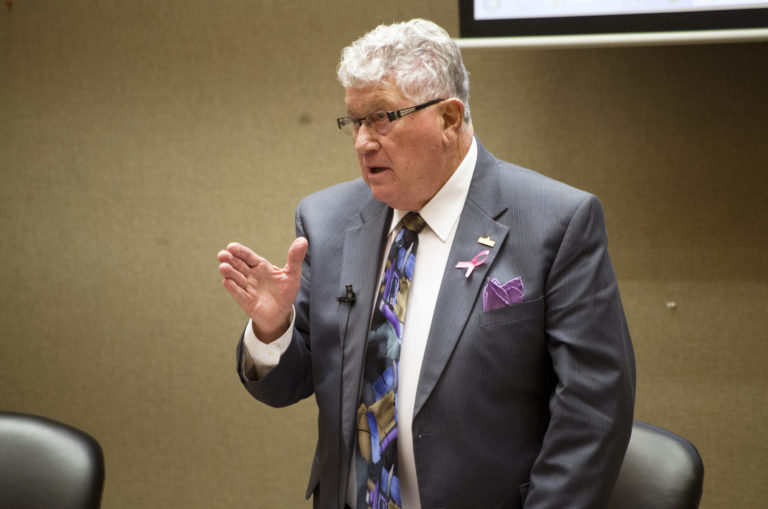
A recent report on deteriorating conditions in the city’s Raw Water Pumphouse has some city councillors wondering why they didn’t hear about the problem sooner.
On Monday, administrators from the Department of Public Works brought forward an infrastructure assessment which said the pumphouse showed “significant signs of deterioration and distress, with some immediate emergency conditions.”
City administration is already working on the most urgent problems. However, significant repairs would be difficult since the building is more than 100 years old and already past its life expectancy.
Problems include “significant corrosion of structural members, damaged and missing concrete and signs of moisture erosion through the roof.” The true extent of the damage could be even worse since the structural assessment only reviewed visible conditions, so there may still be some hidden problems.
“It would be expected that rehabilitating/repairing the structure of the facility would be very costly and would introduce significant risk to any construction project,” read the assessment, which was presented to council by Engineering Services Manager Jeff Da Silva.
That news didn’t sit well with the city’s elected officials, with some saying they wished they’d known about the problem before approving the construction of a new $12-million reservoir, half of which will come from city coffers.
“This amazes me that we’ve got this piece of work here and we went and decided to build a reservoir. I think we should have built a pumphouse,” Ward 4 Coun. Don Cody said during Monday’s meeting. “We’re not going to get any damn water into the reservoir the way this looks. It seems to me we’ve got the cart before the horse here.”
Cody added that he had no doubt the report was accurate given the building’s age. He said it makes no sense to rely on repairs, and wanted the city to start applying for any available grants or funding to start building sooner rather than later.
“Something tells me we may have well made an error here,” Cody said. “We went ahead with (the reservoir) where as I think we should have proceeded with this first. This is amazing to me. I didn’t realize we were taking water from the river with this piece of equipment.”
Structural problems aren’t the only issue either. According to the assessment, the building no longer meets several Operational Health and Safety guidelines and violates some National Building Code requirements. Those problems include overhead clearance violations, egress violations, and incorrect handrail heights, rung spacing, platform spacing and lifting points.
Da Silva said it would cost an estimated $4,850,000 to upgrade the existing facility, while constructing a new one would be only $4,540,000. However, he also emphasized that these numbers were just estimates, and that the true cost of a new pumphouse could increase or decrease by 25 per cent.
The city has already made several upgrades to the facility, the most recent coming in 2012 when new electrical components were installed. However, Da Silva wrote that the back-up generator was “way beyond its functional life.”
During Monday’s meeting, Mayor Greg Dionne he wished he’d known about the problems with the building when they make those electrical upgrades. He added that he wanted to see the city develop a five-year development plan so they’d have something to present to the provincial or federal governments when asking for funding.
After the meeting, Dionne said having such a plan in place would have helped the city identify any problems sooner. The Mayor added that he didn’t regret voting for the reservoir project because the water crisis following the Husky Energy oil spill in 2016 showed they needed another one. However, he also emphasized that it was a priority to build a new pumphouse, even with tough budget years ahead, and even if it meant taking on more debt.
“We are (going to fund it) strictly because it’s a threat, and we have to,” Dionne explained. “The key about debt is being able to manage it. In your own household you can take on so much debt. You don’t want to take on so much, but the key to debt is you’ve got to manage it. We’re managing it very well.”
The Raw Water Pumpouse is located next to the Water Treatment Plant. It is responsible for pumping raw water from the North Saskatchewan River into the water treatment plant for treatment storage and distribution. The oldest portions of the pumphouse were built back in 1920.
